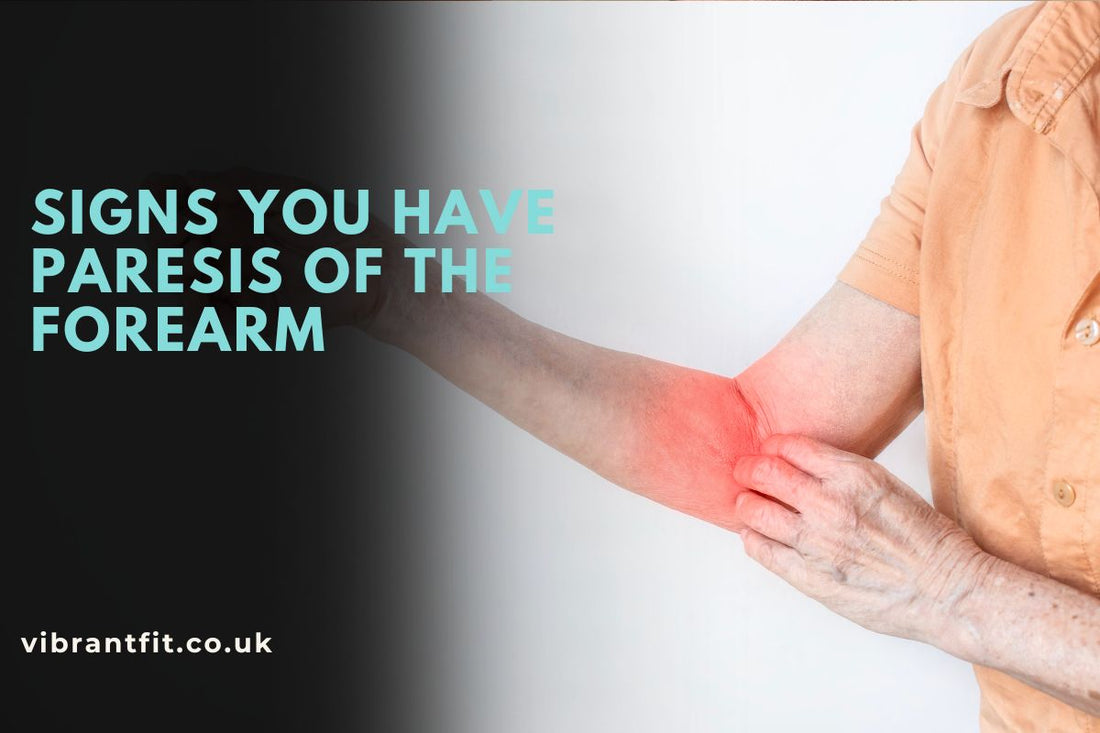
What is Paresis of the Forearm?
Share
Paresis of the forearm means there is weakness or a partial loss of movement in the muscles of your forearm. This happens because the nerves controlling these muscles are damaged or not working properly. It is different from full paralysis, where you cannot move the muscles at all. With paresis, you might still be able to move your forearm, but the strength and control are reduced. This can affect daily activities like gripping, lifting, or rotating your wrist. Understanding what causes this weakness and how to treat it can help you regain function and improve your quality of life.
What Is Paresis of the Forearm?

Paresis is a medical term that describes muscle weakness caused by nerve problems. Nerves send signals from your brain and spinal cord to your muscles, telling them to move. When these nerves are damaged, the muscles they control cannot work properly. Unlike paralysis, where there is no muscle movement, paresis means you still have some control but less strength. The weakness can affect different parts of the body depending on which nerves are affected. For example, when it affects one arm or leg, it is called monoparesis. If it involves one side of the body, it is hemiparesis. Knowing this helps in understanding the specific condition of the forearm.
Causes of Paresis of the Forearm
There are several reasons why you might develop paresis in your forearm. The most common cause is damage to the nerves that control the muscles in that area. This can happen in different ways, including:
-
Trauma to the radial nerve, such as during a fracture of the forearm or wrist.
-
Compression or injury to nerves due to swelling or inflammation.
-
Diseases like multiple sclerosis (MS), which affect nerve function.
-
Cerebral palsy, a condition that affects muscle control and coordination.
-
Other nerve injuries or infections that impair nerve signals.
Signs and Symptoms of Forearm Paresis

The main sign of paresis in the forearm is weakness in the muscles. You may notice that you cannot grip objects firmly or that lifting your hand and wrist is difficult. Other symptoms may include:
-
Muscle wasting if the weakness lasts for a long time.
-
Difficulty performing fine motor tasks like writing or buttoning clothes.
-
Tingling or numbness if the nerve is irritated or compressed.
- Reduced sensation in the forearm or hand in some cases.
Treatment Options for Forearm Paresis
Treatment depends on what is causing the paresis and how severe it is. The main goals are to restore muscle strength and prevent further nerve damage. Treatment options include:
-
Physical therapy to strengthen muscles and improve movement.
-
Wearing wrist or elbow splints to support and protect the affected area.
-
Medications such as anti-inflammatory drugs to reduce nerve swelling.
-
Surgery to repair damaged nerves or relieve compression if needed.
-
Treating any underlying disease, for example managing multiple sclerosis.
Rehabilitation and Recovery
Rehabilitation plays a vital role in recovering from forearm paresis. Once your doctor approves, exercises supervised by a physiotherapist can rebuild muscle power and flexibility. Occupational therapy may help you adapt your daily activities to your current abilities. Patience is important, as recovery can be gradual and take weeks or months. Regular follow-up with healthcare providers ensures that progress is tracked and treatment adjusted. Staying committed to therapy improves the chances of a good outcome.
Preventing Further Injury and Managing Symptoms
It's crucial to shield your forearm from aggravating the nerve damage as you recover. Wearing wrist and forearm supports helps to keep the region steady and lowers stress. Stay away from strenuous or repetitive tasks that can make the problem worse. Adjusting the placement of your mouse or keyboard or making other ergonomic adjustments in your home or workplace might assist to lessen nerve strain. Keep a careful eye on your symptoms and let your doctor know of any abrupt changes. These measures help to control paresis and avoid problems.
Also read : What is Arthritis
Supportive Products for Forearm Paresis

When dealing with forearm paresis, having the right support can make a big difference. The UltraFlex Wrist Brace is great because it feels comfortable and flexible while still giving your wrist the stability it needs to heal. If your thumb and wrist need to be kept still, the Adjustable Thumb Spica Splint does a good job of gently limiting movement and reducing pain. Using these braces during your recovery can protect your forearm and help you get stronger faster.
Summary
A disorder characterized by muscle weakness brought on by nerve damage is paresis of the forearm. It is different from paralysis since some movement still exists. Injuries, fractures, and conditions including MS and cerebral palsy abound among the causes. Early recognition of the indications and a correct diagnosis are critical. Usually, treatment includes physical therapy, supportive braces, medicines, and occasionally surgery. Although many people recover excellent function with proper treatment, recovery is effort- and time-consuming. See a healthcare practitioner for the best course of therapy if you have weak forearms.
